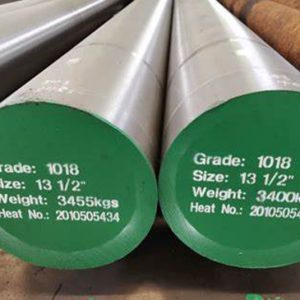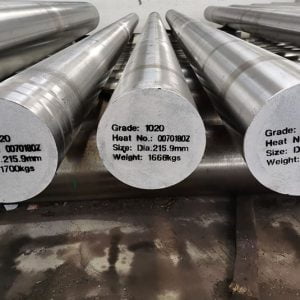Welcome to My Blog!
Before we dive into the content, I’d love for you to join me on my social media platforms where I share more insights, engage with the community, and post updates. Here’s how you can connect with me:
Facebook:https://www.facebook.com/qiluindustrial/
TikTok:https://www.tiktok.com/@carbonsteelsupply?is_from_webapp=1&sender_device=pc
LinkedIn:https://www.linkedin.com/company/89825762/admin/dashboard/
Now, let’s get started on our journey together. I hope you find the content here insightful, engaging, and valuable.
Introduction
Low carbon steel, also known as mild steel, is one of the most widely used materials in various industries due to its versatility, ductility, and cost-effectiveness. The defining characteristic of low carbon steel is its low carbon content, which significantly influences its properties and applications. Understanding the role of carbon in low carbon steel is crucial for engineers, manufacturers, and anyone involved in material selection and design. This blog will explore the importance of carbon in low carbon steel, how it affects the material’s properties, and why it is the preferred choice for many applications.
What is Low Carbon Steel?

Definition and Composition
Low carbon steel is a type of steel that contains a low percentage of carbon, typically ranging from 0.05% to 0.25% by weight. This low carbon content differentiates it from other types of steel, such as medium carbon steel and high carbon steel, which contain higher levels of carbon. The lower carbon content in low carbon steel results in several key properties, including increased ductility, malleability, and weldability.
Common Applications of Low Carbon Steel
Low carbon steel is widely used in various industries due to its favorable properties and cost-effectiveness. Some common applications include:
- Construction: Used in structural components like beams, columns, and reinforcement bars.
- Automotive Industry: Employed in the manufacturing of body panels, frames, and other components.
- Manufacturing: Utilized in the production of tools, machinery parts, and household appliances.
- Pipelines: Commonly used for transporting liquids and gases due to its weldability and strength.
Table: Comparison of Carbon Content in Different Types of Steel
| Type of Steel | Carbon Content (%) | Key Properties |
|---|---|---|
| Low Carbon Steel | 0.05% – 0.25% | High ductility, good weldability, low strength, and hardness. |
| Medium Carbon Steel | 0.30% – 0.60% | Balanced ductility and strength, harder and stronger than low carbon steel. |
| High Carbon Steel | 0.60% – 1.00% | High strength and hardness, lower ductility, difficult to weld. |
| Ultra-High Carbon Steel | 1.25% – 2.00% | Extremely hard and strong, brittle, used for specialized applications like tools. |
The Role of Carbon in Low Carbon Steel
How Carbon Affects Steel Properties
The carbon content in steel is one of the most critical factors determining its mechanical properties. In low carbon steel, the low percentage of carbon has a profound impact on the material’s characteristics:
- Ductility: Low carbon steel is highly ductile, meaning it can be stretched or deformed without breaking. This makes it ideal for applications where the material needs to be shaped or formed, such as in automotive body panels.
- Malleability: The low carbon content allows the steel to be easily molded or bent without cracking. This property is essential in manufacturing processes like rolling and pressing.
- Weldability: Low carbon steel is easier to weld compared to higher carbon steels. The low carbon content reduces the risk of cracking in the heat-affected zone (HAZ) during welding.
- Strength: While low carbon steel is not as strong or hard as higher carbon steels, it offers sufficient strength for many applications, especially when alloyed with other elements.
- Corrosion Resistance: Although not inherently corrosion-resistant, low carbon steel can be coated or galvanized to improve its resistance to rust and corrosion.
Carbon Content and Microstructure
The microstructure of low carbon steel is primarily composed of ferrite, a soft and ductile phase of iron. The presence of a small amount of pearlite, a mixture of ferrite and cementite, gives the steel some degree of strength and hardness. The low carbon content ensures that the microstructure remains predominantly ferritic, contributing to the steel’s ductility and malleability.
Heat Treatment and Carbon in Low Carbon Steel
Heat treatment processes, such as annealing, normalizing, and quenching, can alter the microstructure of low carbon steel and enhance its mechanical properties. However, due to its low carbon content, the effects of heat treatment on low carbon steel are less pronounced compared to higher carbon steels. For instance, low carbon steel does not harden significantly when quenched, but it can be annealed to improve its ductility and machinability.
Advantages and Limitations of Low Carbon Steel
Advantages
Low carbon steel offers several advantages that make it a popular choice across various industries:
- Cost-Effective: Low carbon steel is relatively inexpensive to produce, making it an economical choice for large-scale projects.
- Versatility: Its ability to be easily shaped, welded, and fabricated makes low carbon steel suitable for a wide range of applications.
- Ease of Welding: The low carbon content reduces the risk of cracking during welding, making it easier to join pieces of low carbon steel together.
- High Ductility and Malleability: These properties allow low carbon steel to be easily formed into different shapes without breaking or cracking.
Limitations
Despite its many advantages, low carbon steel also has some limitations:
- Lower Strength and Hardness: Compared to medium and high carbon steels, low carbon steel has lower strength and hardness, which may limit its use in high-stress applications.
- Corrosion Susceptibility: Low carbon steel is prone to rust and corrosion if not properly coated or protected, which can affect its longevity in certain environments.
- Limited Heat Treatment Effects: The low carbon content means that low carbon steel does not respond as significantly to heat treatment processes aimed at increasing hardness and strength.
Selecting the Right Low Carbon Steel for Your Application

Factors to Consider
When selecting low carbon steel for a specific application, it is important to consider the following factors:
- Application Requirements: Assess the mechanical properties required for your application, such as strength, ductility, and weldability. Ensure that low carbon steel meets these requirements.
- Environmental Conditions: Consider the environment in which the steel will be used. If the steel is exposed to moisture or corrosive elements, additional protective coatings may be necessary.
- Manufacturing Processes: Take into account the manufacturing processes that will be used, such as welding, forming, or machining. Low carbon steel’s properties make it well-suited for these processes.
- Cost Constraints: Determine your budget for materials and weigh the cost-effectiveness of low carbon steel against other potential materials.
Common Grades of Low Carbon Steel
There are several common grades of low carbon steel, each with its own specific properties and applications:
- A36 Steel: One of the most commonly used grades, A36 steel is known for its good weldability and machinability, making it ideal for structural applications.
- 1018 Steel: A low carbon steel with good case hardening properties, 1018 steel is often used in manufacturing parts that require moderate strength and good surface finish.
- AISI 1020: Another popular grade, 1020 steel offers a good balance of strength and ductility, commonly used in automotive and machinery components.
Conclusion
Understanding the role of carbon in low carbon steel is essential for making informed decisions about material selection in various industries. The low carbon content in this type of steel contributes to its unique properties, including high ductility, malleability, and ease of welding. While low carbon steel may not offer the same strength and hardness as higher carbon steels, it remains a versatile and cost-effective material for a wide range of applications. By considering factors such as application requirements, environmental conditions, and manufacturing processes, you can select the right low carbon steel grade to meet your needs.
FAQ
What is the percentage of carbon in low carbon steel?
The carbon content in low carbon steel typically ranges from 0.05% to 0.25% by weight. This low carbon percentage contributes to the steel’s high ductility and ease of welding.
How does carbon in low carbon steel affect its strength?
The low carbon content in low carbon steel results in lower strength compared to medium and high carbon steels. However, it provides sufficient strength for many applications, especially when alloyed with other elements.
Can the carbon content in low carbon steel be increased for better performance?
Increasing the carbon content in low carbon steel would transform it into medium or high carbon steel, which would enhance its hardness and strength but reduce its ductility and weldability.
Why is carbon in low carbon steel important for weldability?
The low carbon content in low carbon steel reduces the risk of cracking in the heat-affected zone during welding, making it easier to weld compared to higher carbon steels.
How does carbon in low carbon steel influence its ductility?
The low carbon content in low carbon steel contributes to its high ductility, allowing it to be easily formed, bent, and shaped without breaking, which is ideal for many manufacturing processes.
Does the carbon in low carbon steel affect its ability to be galvanized?
Yes, the carbon in low carbon steel impacts its ability to be galvanized. The low carbon content allows for a smoother and more uniform zinc coating during the galvanization process, enhancing corrosion resistance.
How does the carbon in low carbon steel affect its bending properties?
The carbon in low carbon steel contributes to its excellent bending properties. Low carbon content ensures high ductility, allowing the steel to be bent or formed without cracking or breaking.
Is the carbon in low carbon steel sufficient for hardening processes?
The carbon in low carbon steel is generally insufficient for significant hardening through traditional processes like quenching and tempering. While it can be surface-hardened through case hardening, the overall hardness remains lower than that of medium or high carbon steels.
What impact does carbon in low carbon steel have on its tensile strength?
The carbon in low carbon steel has a direct impact on its tensile strength. While low carbon content provides good ductility and flexibility, it results in lower tensile strength compared to steels with higher carbon content, making it more suitable for applications that require forming rather than high strength.





